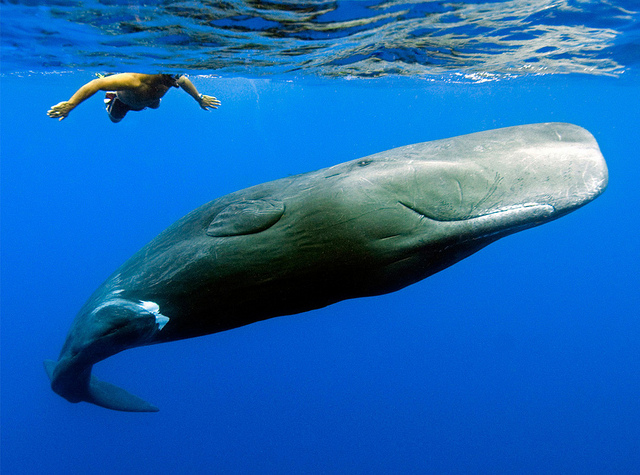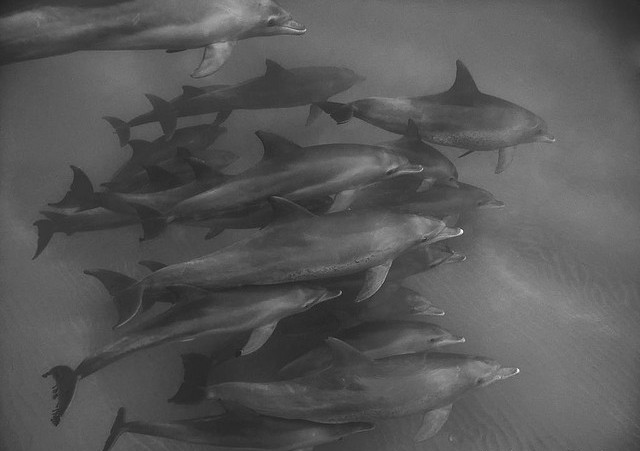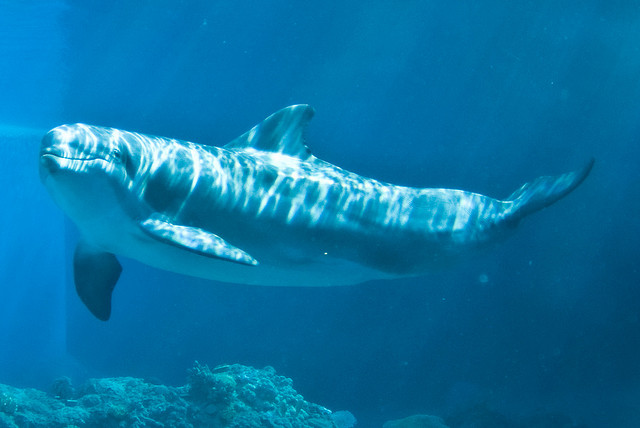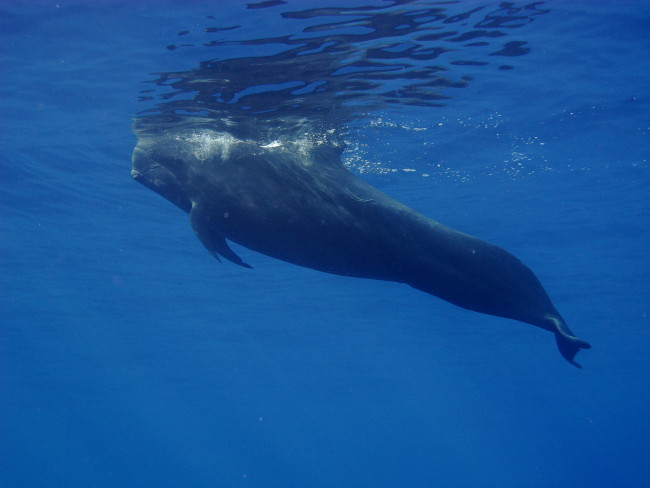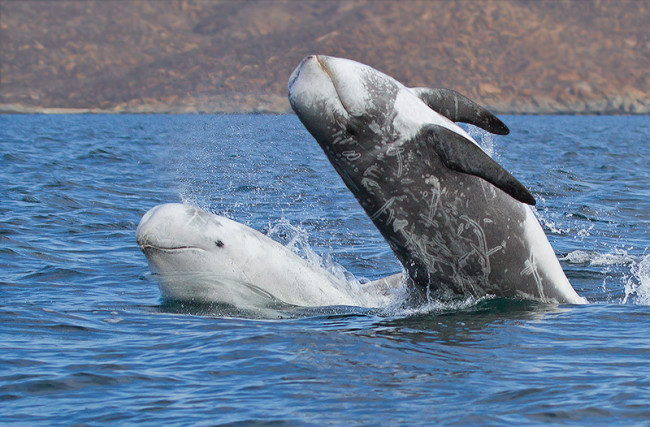Whale and dolphin watching in Europe is a typical summer activity (usually from May to October). In the Canary Islands, however, we can admire them all year round! Bottlenose dolphins and at least approx. four hundred pilot whales are permanent residents of the ocean south of Tenerife.
More than a third of all whale and dolphin species live or sometimes visit the waters around the Canary Islands. Tourists can almost certainly see bottlenose dolphins and pilot whales, and if they are lucky, they can also meet one of the species presented below.
Bottlenose dolphin
More than half (53%) with dolphins, who survive their brutal capture dies within 90 days. Dolphins have very sensitive and delicate skin. Any injury can result in infection and complications. When capturing, dolphins are subjected to severe physical and mental shock. Some of them may become paralyzed and drown. The mortality rate when capturing them is very high. After being caught, some dolphins refuse to eat, or they eat foreign bodies, what causes their death. Some dolphins have committed suicide in the pools by hitting the shore at full speed and crushing their skulls.
These animals are also very sensitive to transport. For example, in November 1999. four bottlenose dolphins and one beluga were transported from Russia to a dolphinarium in Argentina. Two of them died on the way ...
Bottlenose dolphins show attachment to other species, especially to people. There are known cases of defins making intimate contacts with people all over the world. For example, in 1971 in Florida, the Asburry family, who lived next to the canal started feeding a bottlenose dolphin. They called her Dolly , they learned some tricks and built a shelter she liked to use. Dolphin developed a very strong relationship with the mother of the family and acted like a child demanding that he be given a lot of attention. The children of the family became Dolly's inseparable partners in the water.
Pilots whales
Pilot whales are a species that is relatively easy to study and observe. During the day, especially in the morning they can be found on the water surface, where they rest after the night hunting in the depths. So it is very easy to find and photograph them.
Photographing is an essential part of the research as each individual has a unique dorsal fin. They are as unique as human fingerprints. The Atlantic Whale Foundation has created a catalog of these mammals and so far it contains approx. 800 known individuals.
From the foundation's estimates it follows, that approx. 1000 individuals visit the waters around south-west Tenerife. Most likely, about half of them live in the waters around the island at a given time, while the rest migrate to other places and reappear after some time..
Sperm whales
Sperm whales are very difficult to confuse with another species. They traverse the deep waters of our oceans in herds from 20 do 25 pieces (most often they are females with young). They are most often found in oceanic ditches on the border of continental shelves, but they can also be found in coastal waters with a depth of. 200m. Usually only adult males migrate to Antarctica, where they go to feed. Although it is an easily identifiable species, it is rare to see most of his body above the water. It is the largest toothed whale in Antarctica, has a huge square head and a massive dark gray or brownish wrinkled body that looks a bit like a dried plum.
The narrow lower jaw is equipped with 20 – 25 tapered teeth, which fit into the holes in the upper jaw. Sperm whales do not have a dorsal fin, but three-quarters of their body has a visible dorsal hump followed by a series of distinctive ankles reaching a wide triangular and deeply ribbed tail. Sperm whales feed on squid, fish and octopus caught during very deep dives. While foraging, they consume about one tonne of food each day! Like other cetaceans, they use echolocation to navigate and identify food. By issuing a series of tweeter clicks and picking them up when they bounce from the environment and come back, they are able to determine what is around. This is an essential skill when hunting giant squid, which grow up to approx. 250kg and occur in absolute darkness at depths of less than one kilometer.
Risso's dolphins
They appear all over the world, usually in temperate and tropical waters, most often, however, in the open ocean.
Dolphin Risso has a barrel shape, with a blunt head (without a beak). Coloration ranges from blue-gray, gray-brown to almost white, depending on age and cuts in males. Scars from skirmishes with other individuals are often clearly visible. Has seven or fewer pairs of teeth in the front of the lower jaw. The dorsal fin is tall and curved, with a pronounced pointed ending, as well as the pectoral fins. The tail is thick and ends with a strong fin.
body length: ok. 3 m
weight: 500 kg
food: cephalopods, shellfish, some small fish
